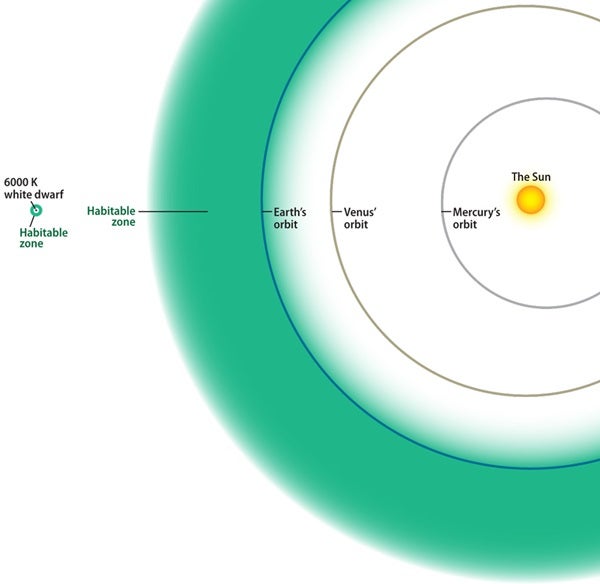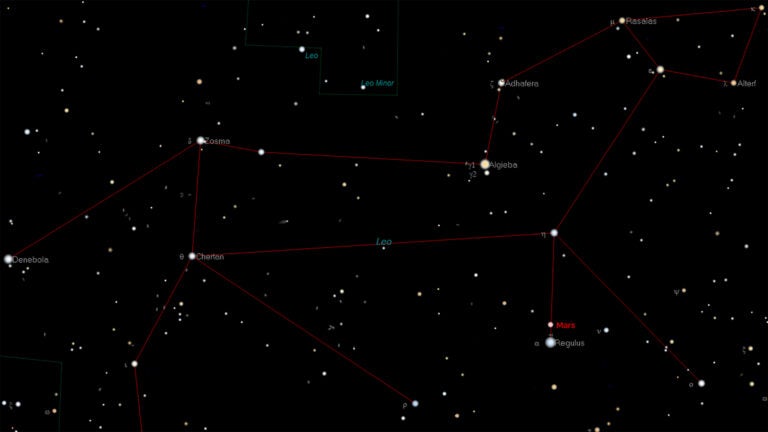A Goldilocks zone — usually called a “habitable zone” (HZ) — is the area around a star that has the right temperature and luminosity for a planet to maintain liquid water on its surface. To have an HZ, a star must have a certain minimum temperature at its surface or else any planet near the star will be frozen over, no matter how close in the world orbits. That minimum temperature is roughly 325 kelvins (125° Fahrenheit). This value comes from 273 K (32° F, the freezing point of water) multiplied by the fourth root of two to account for the fact that even a planet placed extremely close to a star is cooler than the star because it re-radiates some of its heat from its night side. I say “roughly” because many details determine the surface temperature of a planet, like whether or not one side of the world always faces its star.
All the ordinary stars that you can see in the sky with your unaided eyes are plenty hot enough to have HZs. But white dwarfs are not like most stars. They are dead stars — the dense cores of orbs like the Sun — and no longer generate their own power through nuclear fusion. (Fusion of light elements into heavier ones within a star’s center is what defines it as a star.) White dwarfs slowly radiate their energy and cool down.
When white dwarfs are first born, they may have temperatures in excess of 20,000 K (36,000° F). That’s certainly hot enough to have an HZ, although this zone is located much closer to the star than the Sun’s HZ, for example, because the white dwarf is much smaller. Several billion years later, however, the dwarf star can become even colder than ice. At that point, the HZ around it shrinks to nothing, and Goldilocks had best find another star to live near!
NASA’s Goddard Space Flight Center, Greenbelt, Maryland










